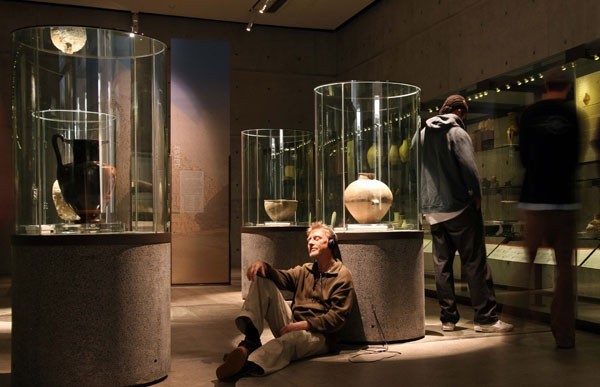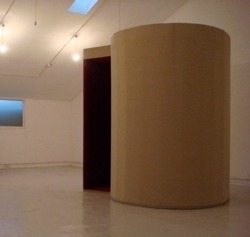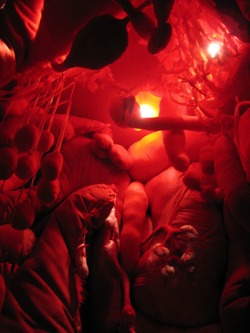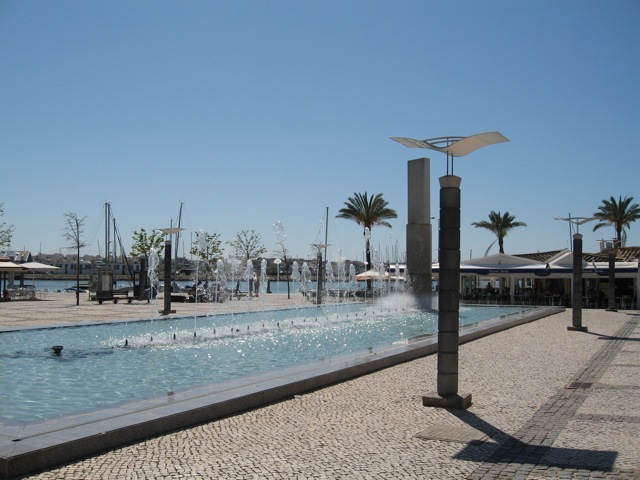Five Sound Questions to Mamoru
 Wednesday, May 12, 2010 at 18:29
Wednesday, May 12, 2010 at 18:29  Performance: Etude no.13 - Ice. Photo: Emi Yamaguchi
Performance: Etude no.13 - Ice. Photo: Emi Yamaguchi
Japanese artist Mamoru creates his own instruments and installations. In his series of Etudes, he takes average, everyday objects and places them in an abnormal situation. He encourages his audience to indulge in the, preferably unamplified sound, to really carefully listen and be surprised by what they hear.
This week he answers my five questions about sound and listening. Read more about Mamoru and his work on his website www.afewnotes.com.
It is really hard to say what sound made the most impression on me… Honestly, I don’t even remember if I was very sensitive about it. However, one thing that comes to my mind is the memory of Sundays during my childhood. I grew up in a family that goes to a church every Sunday. This is very rare in Japan (it says less than 1% of the population is Christian), and it wasn’t fun for me to get up early and drive an hour or so to get there while my friends are watching the Anime on TV at home.














